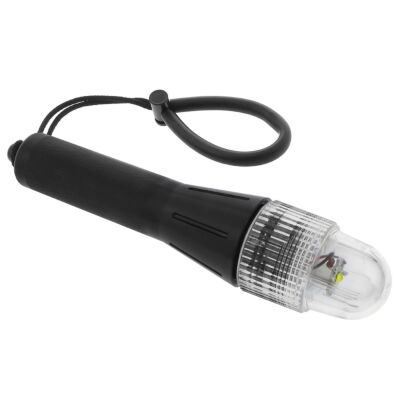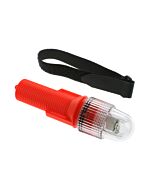TekTite Strobe 3500 XL Expedition
- 1000 Lumens - double O-ring sealed - depth rated to { 2500 ft | 770 m }
- 100 hours on three C-cell batteries
- Twist on for activation
- Visible at the surface for several miles at night
- { 9.2 in | 23 cm } long - sturdy ALUMINUM body and LEXAN® lens material
TekTite Strobe 3500 XL Expedition
The 10-Watt Tektite 3500XL Expedition Strobe features a shock-resistant housing machined from a solid bar of aircraft aluminum plus a LEXAN® cap, is double O-ring sealed, depth rated to { 2500 ft | 770 m }, will run 100 hours on a set of three C-cell batteries. The 3500XL includes two eVDS factory programmed modes: a steady on mode for use as an emergency backup or area light plus the flashing on/off strobe mode. Visible at the surface for several miles/kilometers at night, the initial 1000 Lumen flash rate is 120 flashes per minute with fresh alkaline batteries. The 3500 XL has twist on switch with non-slip grip, aluminum black color body with sturdy attachment point for snap or lanyard. At { 9.2 in | 23 cm } long and { 2.2 in | 5.6 cm } wide this strobe is too big to fit in most pockets. Includes an adjustable wrist lanyard, and also includes a limited LIFETIME Warranty from TekTite.
| Brand | TekTite |
|---|---|
| SKU | TTI-3C-7900 |
| Weight | 2.000000 |
Customer Reviews
 WARNING
WARNING
Do not store any handheld flashlight or strobe for extended periods with alkaline batteries remaining inside the device, because unused alkaline chemistry batteries are prone to leaking. When alkaline chemistry batteries remain in unused devices for long periods, hydrogen gas can build up inside the cell casing until the pressure causes it to rupture, allowing the chemical components to leak out.








